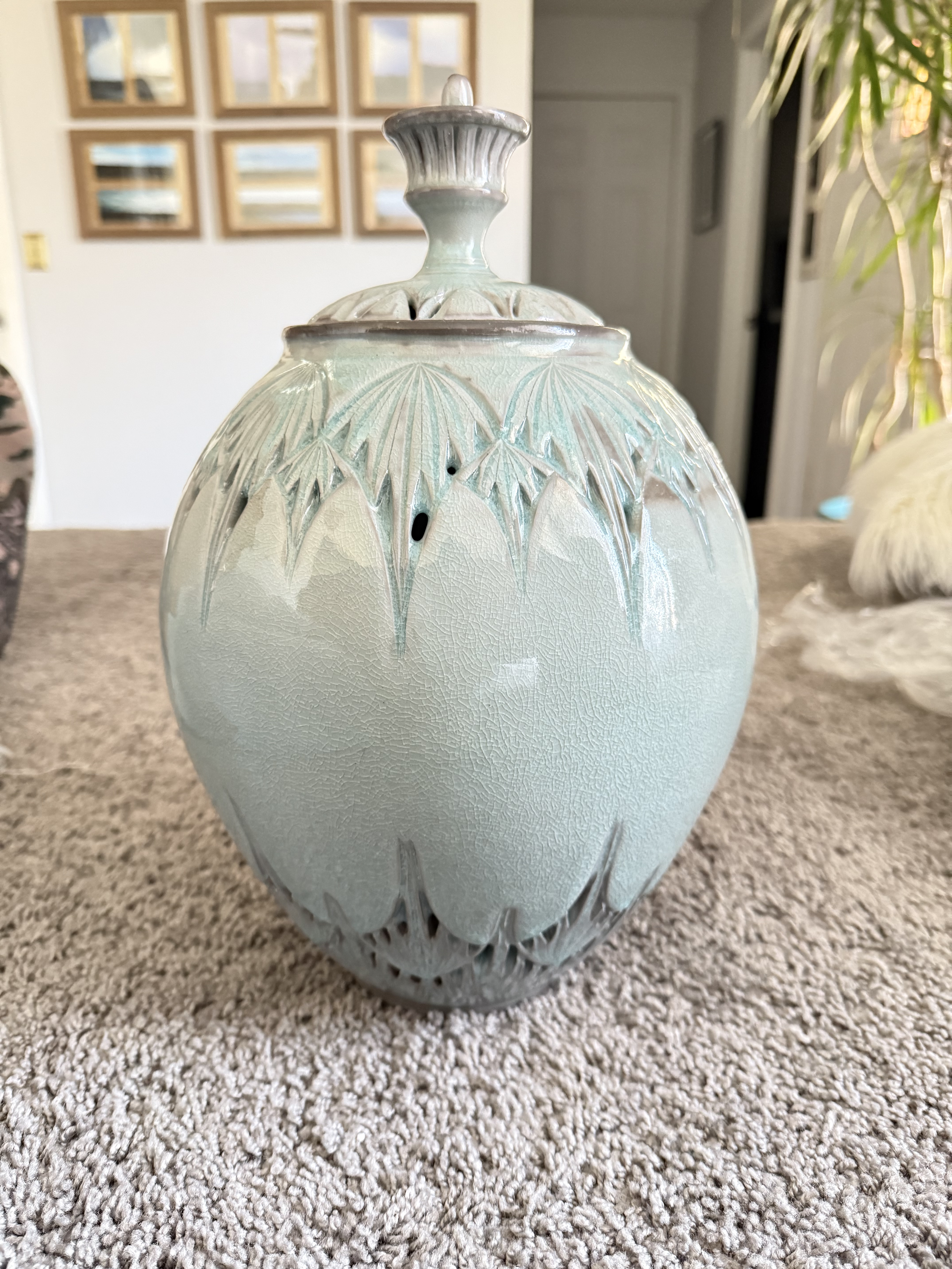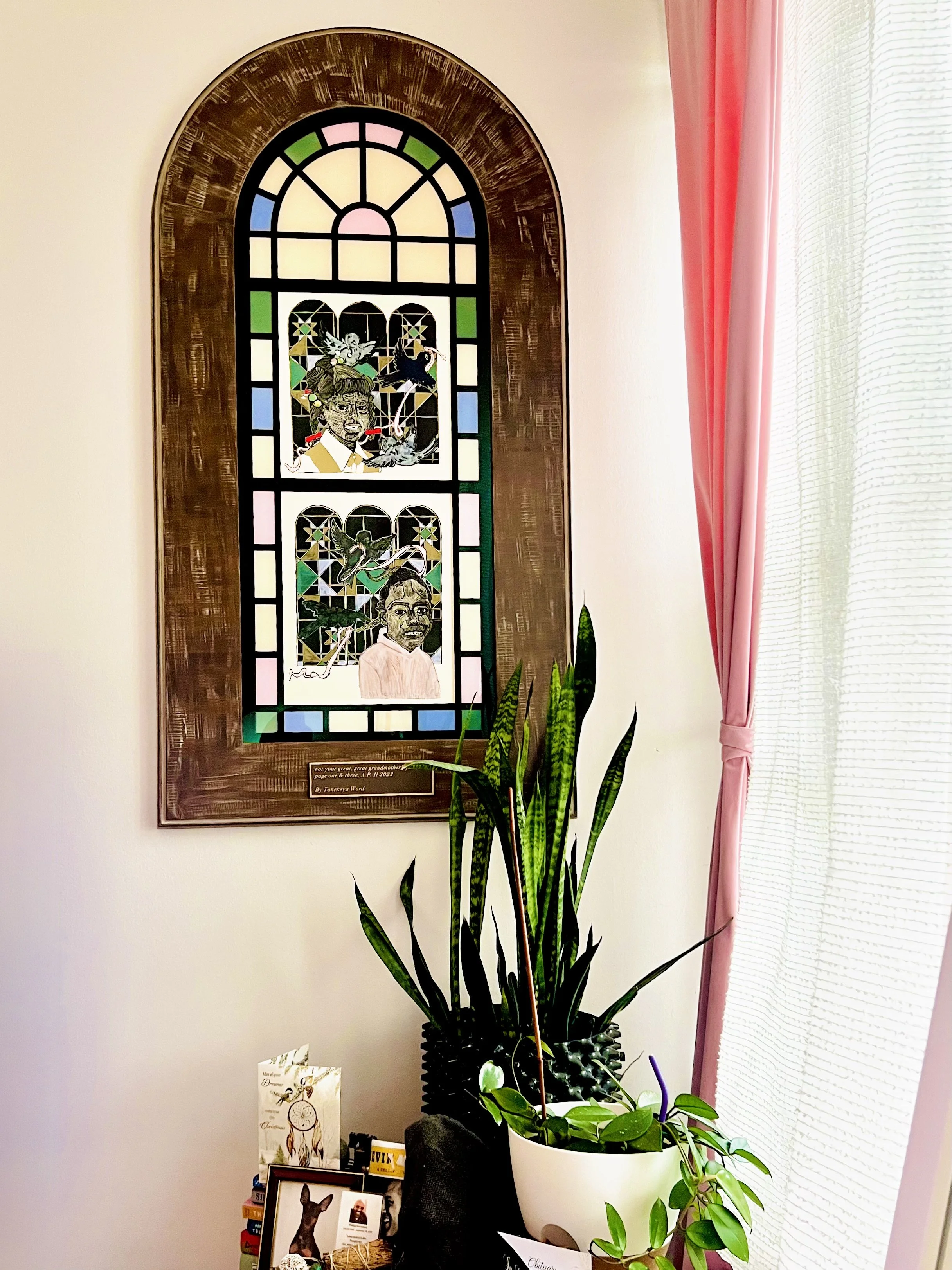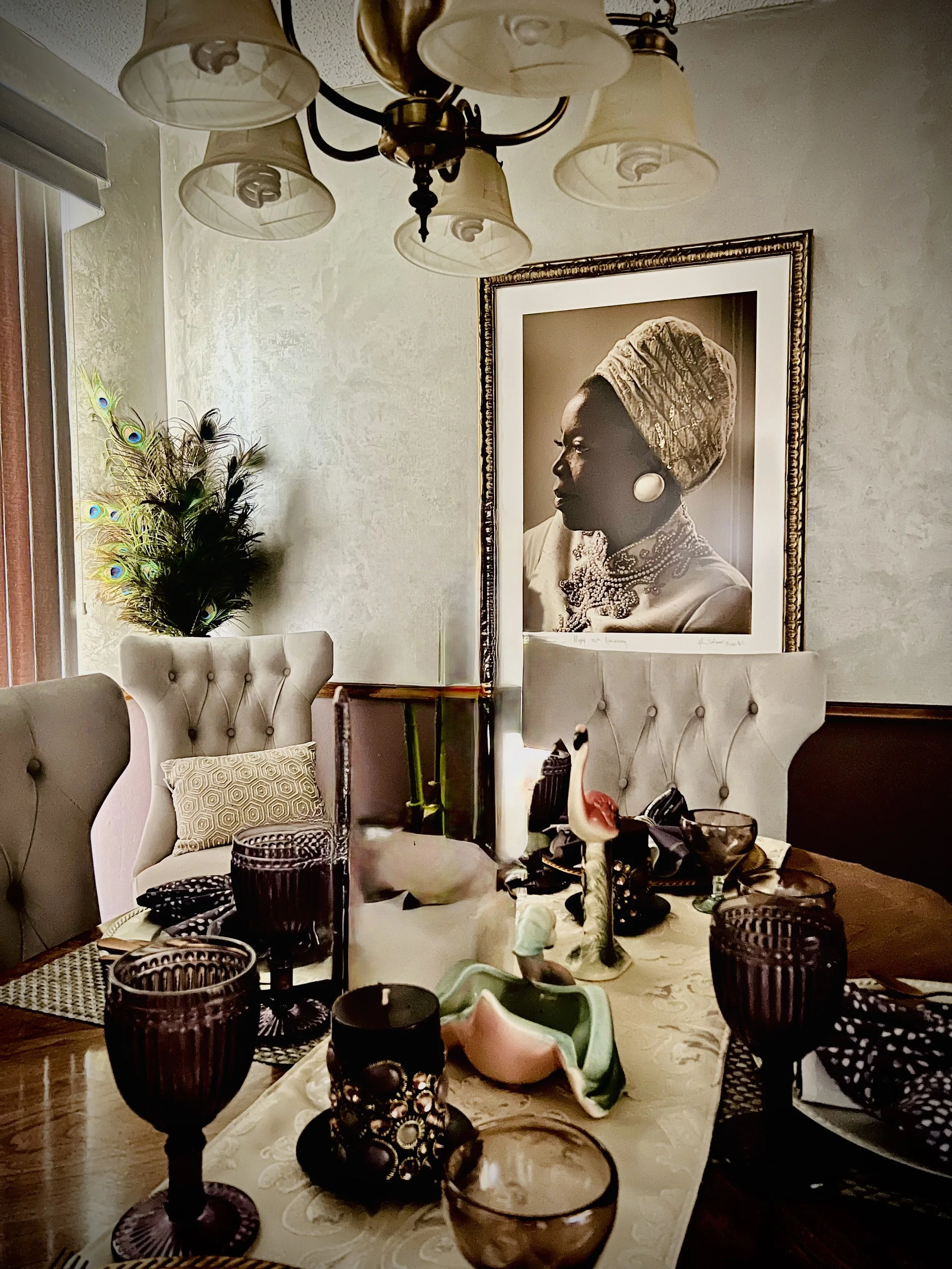The Collector: Yolonda Ross
An award-winning actress, director, and writer known for her dynamic performances, Yolonda Ross is also a thoughtful art collector and a visual artist in her own right. Here, Ross talks with Bureau about her growing art collection and the connections between visual art, identity, and storytelling.
Tell us a bit about the first impulse you had as a creative person. Do you remember the first art piece you created?
I don’t remember if it was the first, but there are two. I remember making my grandpa an ashtray. I made it from mud. I added just enough water to a bunch of dirt to make it thick enough to hold shape. I took a fork and pressed down the edges so it would hold the cigarette. He smoked Pall Malls. I let it sit out in the sun until it was completely hard. I don’t remember how long that was. It was summer, though, and at my grandparents' house.
The others were school projects: for Christmas, it was a cutout tree on hard paper, I glued macaroni onto it and spray-painted it silver. Once for Thanksgiving, it was picking leaves. Big, beautiful Fall leaves. Sandwiching them in between wax paper with crayon shavings, then ironing them on low. The colors from the crayons would mix and look like pretty watercolors in between the wax paper. I imagine these days they wouldn’t even let kids near a hot iron in school.
What inspired you to begin your art collection? Did you then, or do you now, view it as an intentional collection, with a specific idea about the type of art you want in your collection?
I was inspired to start my collection from research I had been doing for a film project of mine about a Black couple in the arts. Thinking about the production design element of the film, I wanted to make sure this couple had art in their home that spoke on many levels. I also wanted to have other pieces besides my own. My collection is definitely intentional. I set out to collect works by Black and brown artists, making sure they had different aesthetics, in order to show that we do everything, in every way, with excellence.
I noticed on Instagram that collectors and artists would post their work and announce their exhibitions. I think one of the first that really stood out to me was Sallie Richardson, with a post about getting a piece from the artist Rhonda Brown, from Chicago. At that point, I had a few prints from friends like Cey Adams and Violeta Sophia.
Though my collection is intentional, I never realized, until recently, that my collection really showcases different parts of myself: as a child, as a woman, and how I see life.
What was the first piece in your collection?
The first piece in my collection was “Topper” by Derek Fordjour.
Talk a bit about the relationship between gallery and collector– what aspects of that relationship have been important to you as you have been building your collection?
That's a very interesting question. I feel they can both help each other. The gallery can and will most times, if you are on their roster, or are part of their “family”, let you know when the artist you like has new pieces or something they know you will love from their roster of artists. If they’re good, they will take the time to learn what you like, what you are looking for, and what you’re about. They can suggest pieces to you that you didn’t know you may want or become obsessed with. They know how their artists are trending and can help you fill out your collection. They can also offer assistance one way or another to help you acquire pieces if they know you, and you’re on good terms with them.
On the other side of that, being a Black woman collector, I have found that many times I help in purchasing pieces, because in my case, I tend to collect from Black artists, and though people of color are collecting more, many times it’s institutions buying, or white people. Artists of color like knowing that people of color are purchasing their art and enjoying it in their homes.
Being on TV doesn’t hurt when an artist says they are part of my collection. In my case, I collect for me, not for selling off to the highest bidder. Artists appreciate that. They also seem to appreciate that I create myself, so I understand what goes into making something unique. I cherish it. I know each piece in my collection. I have an affection for each one, and for the artist that created it.
What role do you think art plays in representing the experiences of marginalized communities, particularly in the context of your collection?
I believe art showcases our emotions– how we see life, and how we process life. It can be a coping mechanism, It can let the world know what you are going through, and what your day-to-day is like. Something coming from Henry Taylor is not going to have the same feel as something from Tanakeya Word, because their storytelling is different, and their medium is different.
I think it's important for people to learn about the art, and learn about what the artist is saying with their piece. I have a piece called "Flight", from Megan Gabrielle Harris, depicting a beautiful afroed Black woman, unclothed, with just a pillow over her. I think she's smoking weed, in front of a big picture window and the moon reflecting on the water behind her. There's no way you can look at that painting and not FEEL this moment, know how it feels in your body, in your mind. Hear the water and the music she probably has playing. That's what art can do. Make you feel and connect. I love spending time with every person, creature, and creation in my home. My art makes me feel protected. These Black women on my walls got my back.
Are there any specific artists or pieces in your collection that hold significant meaning for you? If so, why?
The Saar family of pieces. This family is art royalty, as far as I'm concerned. I think it's beautiful to see this family of Black women, of multiple generations, who all possess this unique gift of expression and vision, which showcases their individuality yet, the seed from Bettye, grew deep roots connecting them.
Other pieces, a small Charles White, because he gifted it and inscribed it to his friends. That placed the piece in a time and place of personal value. Having a story, a personal story is an asset. A John Woodrow Wilson– I noticed there is a part of me that really loves black and white shading, telling a story through darks and lights. A sculpture by Justin Paik Reese– his work is just heavenly to me. Pieces by Brittany Leanne Williams, the way she uses the female body– we are creation, the universe, support to each other.
Is there a specific artist whose work you find exciting at the moment?
Torkwase Dyson, Stephen Towne's, Dyani White, February James, Gio Swaby, and Cheryl Pope.
If money were no object, what piece would you love to have in your collection?
If money were no object, a quilt by Bisa Butler. One of my grandmothers quilted, and the other made her own clothes. So, I am a lover of textiles. I was drawn to Bisa and her work the moment I learned of her. I searched her out and had to know her. And I've always loved "Three Bend Deep" by Derek Fordjour. Also, a piece by Howardena Pindell.
Learn more about Yolonda’s own art practice at yolondaross.com
Photos courtesy of Yolonda Ross





